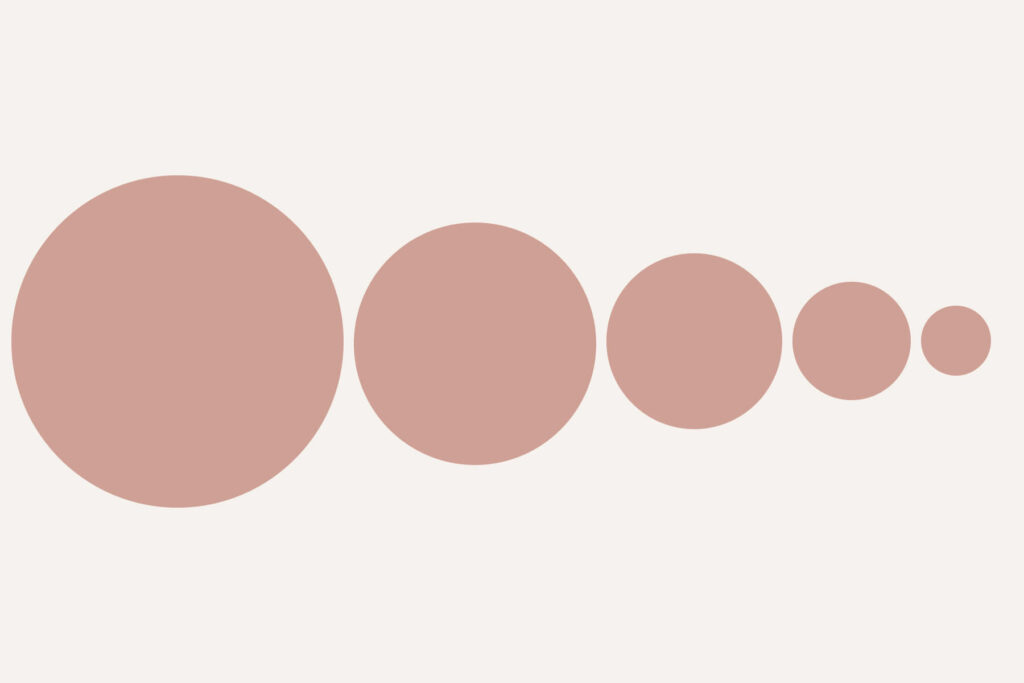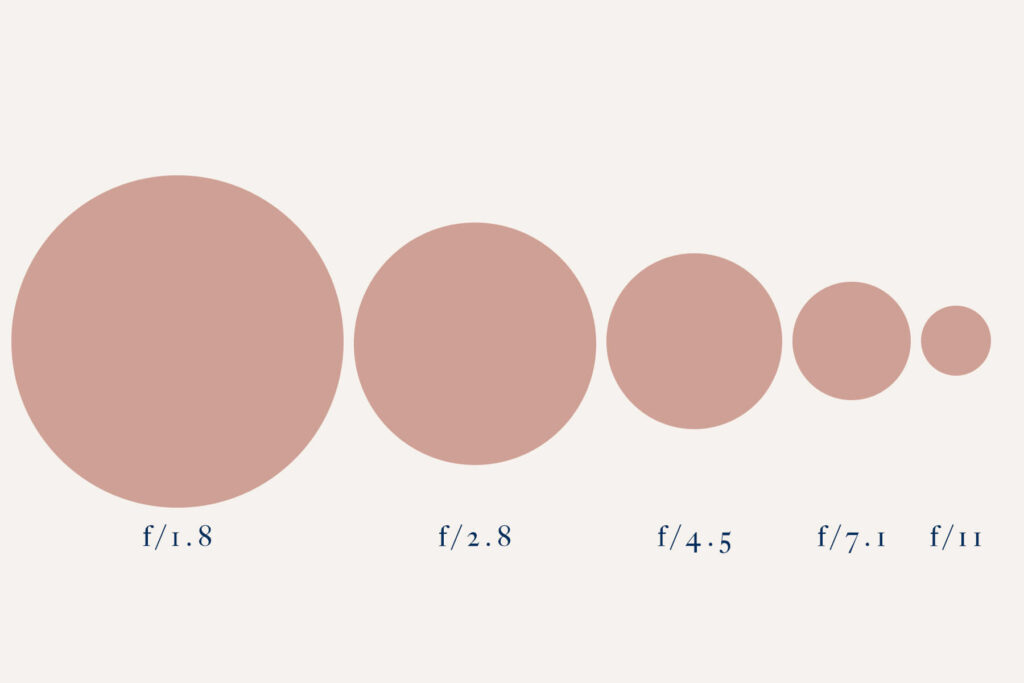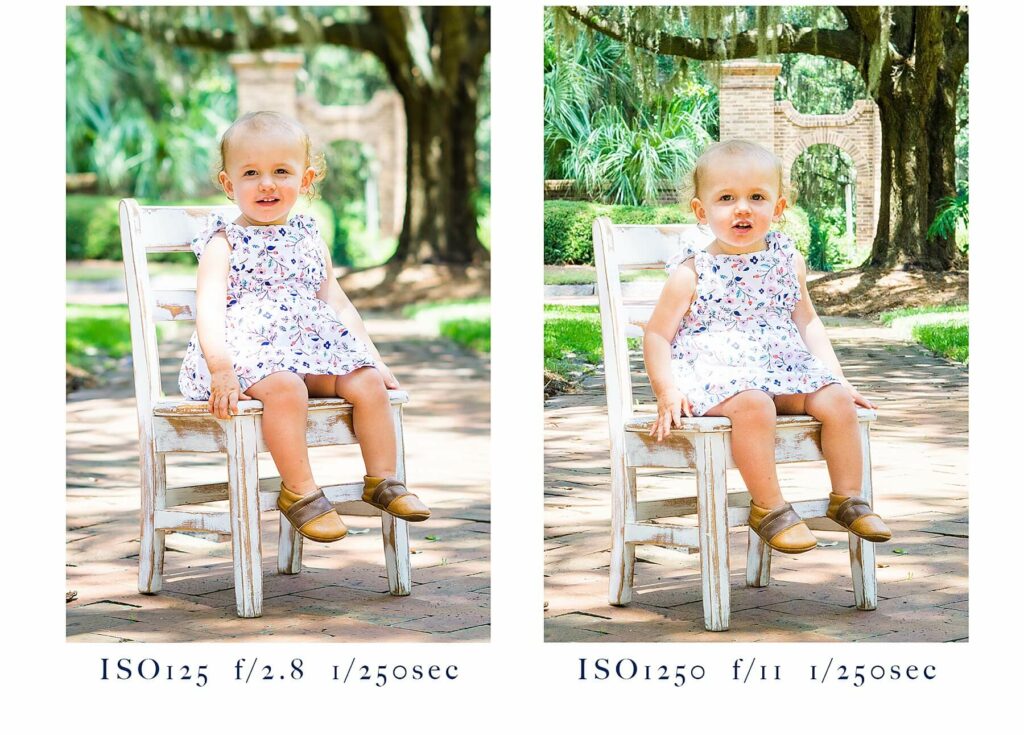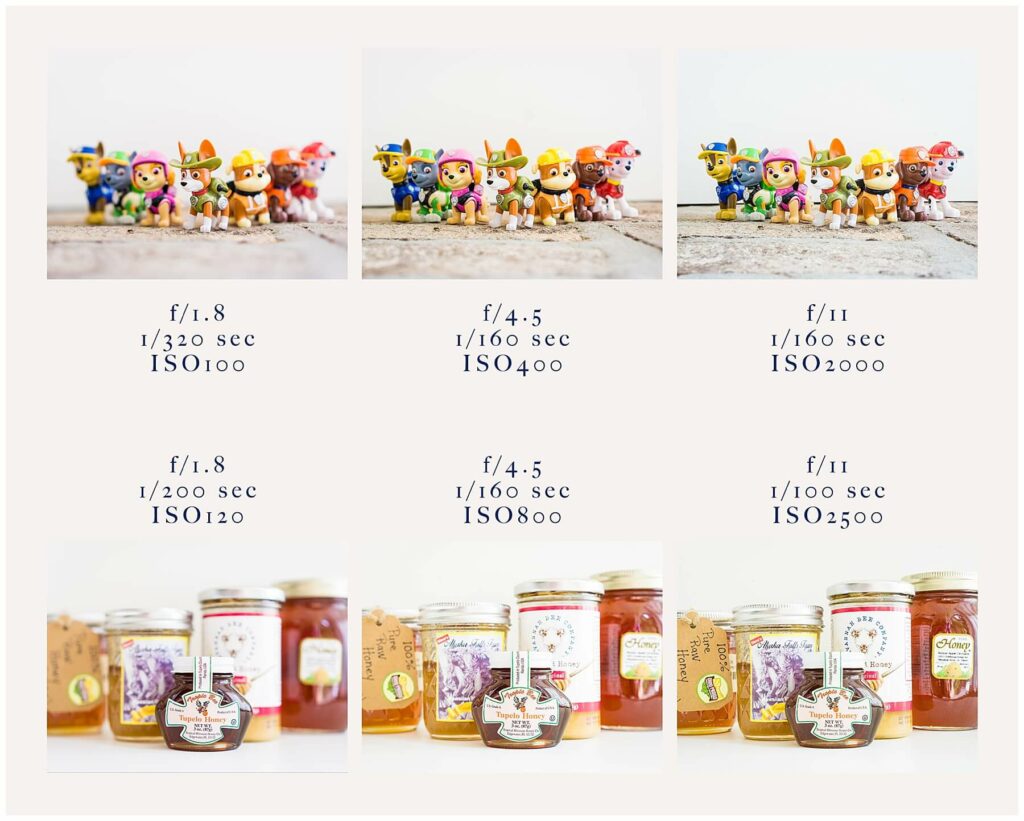Are you ready to use that camera you’ve had sitting around for a few years? Ready to take the camera you’ve been using on auto and step it up a notch? You’re in the right place! Think it’s going to be complicated? Not here, I’m going to break it down in simple terms so you actually understand and can see a difference in your shots immediately.
What is Aperture
Aperture is the opening of the lens, think about poking a hole in a sheet of paper. If you use a hole punch the hole will be bigger than if you use a pin. It’s the actual size of the hole, don’t confuse it with the opening and closing of the hole (that’s shutter speed, which we will cover next month). You may also hear aperture referred to as an f/stop.

A larger hole lets in more light and a smaller hole lets in less BUT this is where it can get a little confusing because the larger hole is actually referred to as a smaller f/stop. It seems backward, I know, but bare with me as I explain more.

Depth of Field
The most noticeable thing aperture controls is the depth of field (DOF) in a photo. The depth of field is the amount of a shot which is in focus. A large DOF means the majority of the photo is in focus and a small DOF means only part of the photo is in focus and the rest is blurred.
Here’s how I think of it to help with the confusing aspect of small number and large holes. A small number equals a small depth of field and a large number equals a large depth of field. In the example below, see how much more of the background is in focus when the f/stop number is higher?

Go Out and Practice
Now take that camera you’ve been shooting on auto with or haven’t messed with much because you just aren’t sure and set up your own practice.
You can start with semi-auto mode and switch the dial to A or AV mode. This will allow you to control the aperture while still allowing the camera to make the choices on Shutter Speed and ISO.
Go outside, if you can, to practice. If outside isn’t an option find a doorway or a window with lots of light and practice there. Grab 5-7 items that are about the same size (legos, trains, jars/cups, etc) and set them up in a V. Start with your aperture at the lowest number your camera allows and then move up from there, focus on the object at the point of the V (closest to the camera). You will be able to see the difference in depth of field as your f/stop number grows higher.

See how from left to right in both of these examples you are able to see more of the subjects. In the top example Tracker is in focus (he’s at the point of the V) where the rest of the Paw Patrol are not in focus and gradually as we move the aperture number higher the whole pup team comes into focus. The same is true with the honey in the bottom example. In the first photo you can only really read the label of the smallest honey jar but by the last you can read the labels on all the honey.
Ask Away…
If you have any questions, feel free to ask! This blog is the first in a series so stay tuned for the Shutter Speed, ISO, and Exposure Triangle editions. If you aren’t already signed up, enter your info below and those blogs will come straight to your inbox when they are published.
[…] ask! This blog is the second in a series so stay tuned for the ISO, and Exposure Triangle editions. Check out the Aperture Edition, if you missed […]
[…] isn’t going to move so you can really play with your settings. You’ve already read the APERTURE and SHUTTER SPEED blogs so you know what to consider when making those setting […]
[…] A handy guide to learning the basics of your camera can be found HERE. This is the first in a series of blogs on camera basics. […]